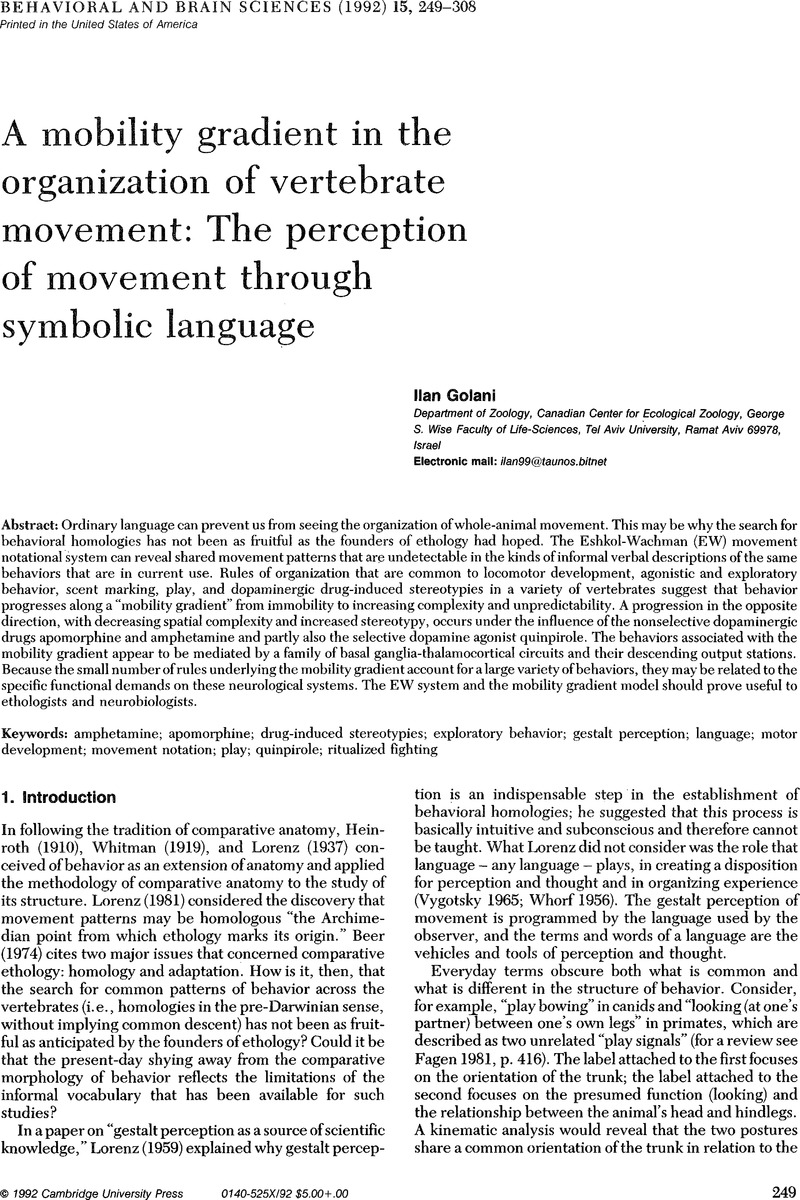Crossref Citations
This article has been cited by the following publications. This list is generated based on data provided by Crossref.
Hadar, Uri
1994.
Implications of methodological rigor in movement analysis for the study of human communication.
Behavioral and Brain Sciences,
Vol. 17,
Issue. 4,
p.
753.
Golani, Ilan
1994.
The practicality of using the Eshkol-Wachman movement notation in behavioral pharmacology and kinesics.
Behavioral and Brain Sciences,
Vol. 17,
Issue. 4,
p.
754.
Shepherd, J. K.
and
Dourish, C. T.
1994.
Implications of Eshkol-Wachman movement notation for behavioural pharmacology.
Behavioral and Brain Sciences,
Vol. 17,
Issue. 4,
p.
754.
Golani, Ilan
and
Kafkafi, Neri
2025.
On growth and form of animal behavior.
Frontiers in Integrative Neuroscience,
Vol. 18,
Issue. ,


